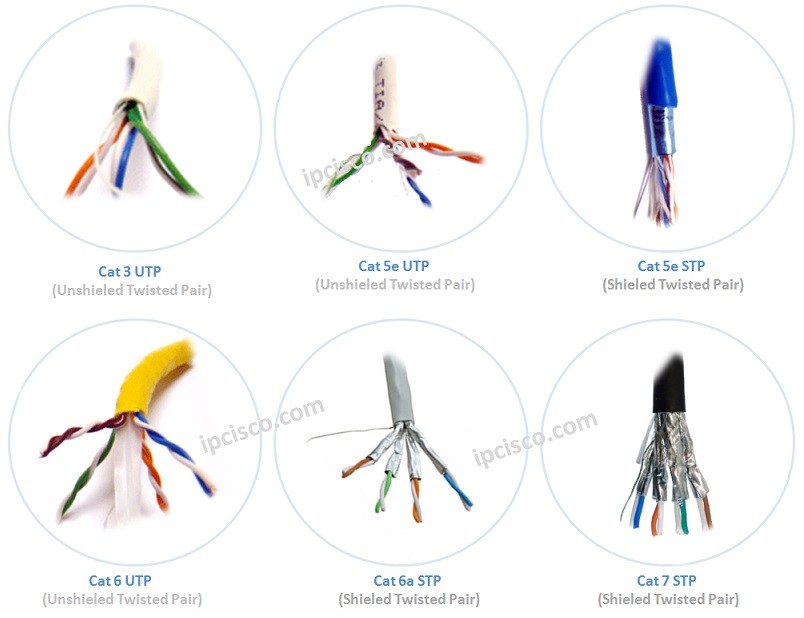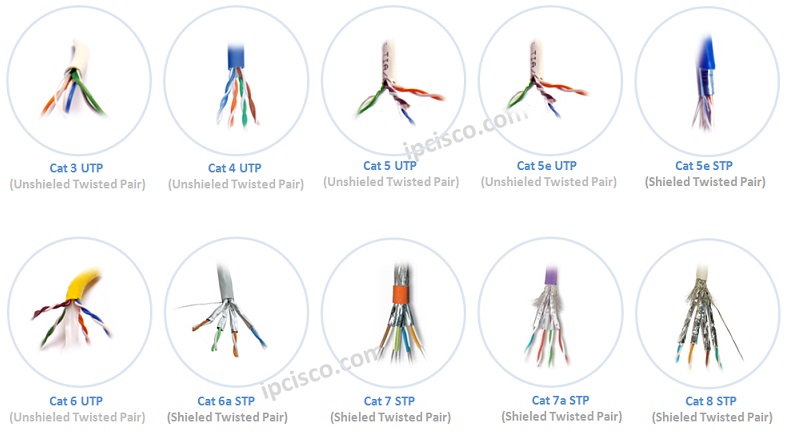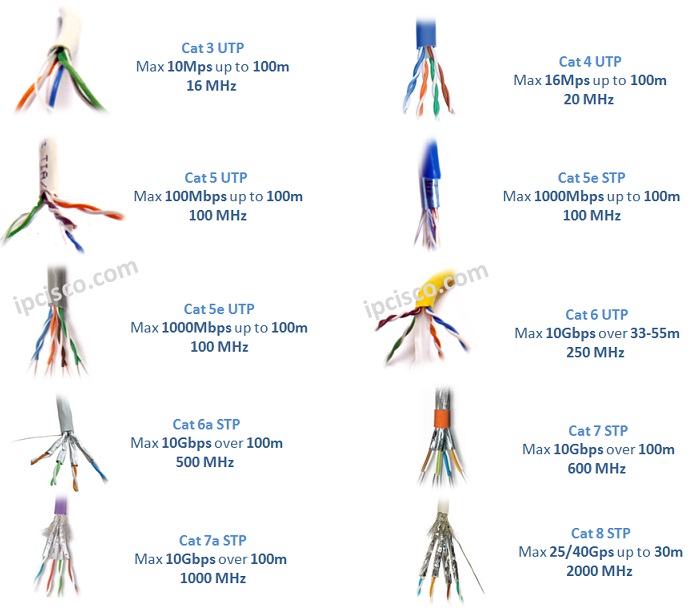- COURSES
- SPECIALS
- BLOG
- MEMBERS
- SHOP
- ABOUT
- ENROLL HERE

Table of Contents
Network Cabling is the Layer 1 of OSI Model. One of the most important part of a network. With the media the network traffic can travel from one end to the other end. This can be done through wireless networks also. But network cabling is always used even if wireless networks are used.
Different networks and interfaces require various cable types. Twisted-pair cables, Optical cables, Coaxial cables are the common cable types.In this article, we will focus on these cable types and we will talk about them detailly.
To talk about cable types in network cabling, let’s start with Ethernet Standard. As you know Ethernet, is one of the Layer 2 standard that is commonly used. There are different cable types that are used with Ethernet Standard. These are:
• Ethernet 10Base-T (10 Mb/s)
• Fast Ethernet 100Base-T (100 Mb/s)
• Gigabit Ethernet 1000Base-T (1000 Mb/s)
• 10 Gigabit Ethernet 10000Base-T (10000 Mb/s)
Ethernet (10Base-T) is provided with Copper Twisted Pair cables. There are two standard for Ethernet (10Base-T):
• 802.3i (10Mb/s – half-duplex)
• 802.3x (10Mb/s – full-duplex)
Fast Ethernet (100Base-T) is know as 802.3u in network cabling and it has also Half and Full duplex modes. Normally it is used withing 100meters but according to the cable type used, this can be changed. If Multi Mode SFP (Fiber Optic) is used, then this distance can be up to 2km. If Single Mode is used, then the distance can be up to 25 km.
The types of Fast Ethernet are :
• 100Base-TX (Provide by 2 pairs of Twisted Pair), 100m
• 100Base-T4 (Provide by 4 pairs of Twisted Pair), 100m
• 100Base-FX (Provide by Optical Cable), 2km, Multi Mode SFP
• 100Base-FX-SM (Provide by Optical Cable), 25km, Single Mode SFP
Gigabit Ethernet (1000Base-T) is know as 802.3ab and it has only Full-duplex mode. It provides 100 meters with 4 Pair Category 5 (CAT5). But if we use Fiber Optic Multi Mode SFP, then this can be up to 550 meters. And if we use Single Mode this can be up to 70 km. Here, the SFP type is important. Different SFP types even if they are Single Mode, support different distances.
• 1000Base-TX (up to 100m)
• 1000Base-LX (up to 10km)
• 1000Base-SX (up to 550m)
• 1000Base-ZX(up to 70km)
10 Gigabit Ethernet (1000Base-T) is know as 802.3ae in network cabling and it is used only with Optical cables. With Multi Mode, it is up to 300 meters. But with Single Mode SFPs, this distane can be up to 80 km.
Fiber Optic cables are high capacity cables. Beside lower speeds, they are also the cables that is used for 100Gbps connections.
To learn Networking Connectors, you can also visit Networking Connectors Lesson.
In network cabling Fiber Optic cables has different modes. Generally we can divide this into two:
• Multi Mode Fiber
• Single Mode Fiber
Different SFPs can be used with these Modes also. And this different SFPs provide different properties and distances. You will also hear too much LX, SX, ZX etc. These are the terms used with Fiber Optic Cables and each of them has different capability.
By the way, we will hear too much Category, when we talk about cables in networking. What are these Categories? Lets write each of them beginning with CAT3 to the new technology CAT8.

• CAT3 (Max 10Mps up to 100m) 16 MHz
• CAT4 (Max 16Mps up to 100m) 20 MHz
• CAT5 (Max 100Mbps up to 100 m) 100 MHz
• CAT5E (Max 1000Mbps up to 100 m) 100 MHz
• CAT6 (Max 10 Gbps over 33-55 m) 250 MHz
• CAT6a (Max 10 Gbps over 100 m) 500 MHz
• CAT7 (Max 10 Gbps over 100 m) 600 MHz
• CAT7a (Max 10 Gbps over 100 m) 1000 MHz
• CAT8 (Max 25/40 Gbps up to 30 m) 2000 MHz

To learn Networking Connectors, you can also visit Networking Connectors Lesson.
Serial cables are the legacy transport mechanisms. It is evolving through the USB. But it is good to know about them even if they are old technology. There are two types important Serial cables. These are:
• RS-232
• RS-422
Leave a Reply